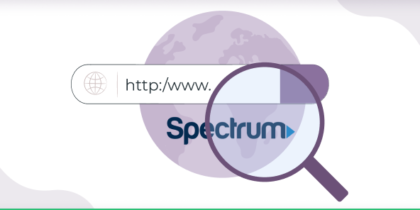Table of Contents
In the ever-evolving landscape of cybersecurity threats, 40% of global malware is fileless.
Fileless malware attacks have emerged as a stealthy and insidious menace.
Unlike traditional malware based on malicious executable files, fileless malware operates silently and leaves a minimum footprint, making it tough to locate and mitigate.
In this article, we will learn how fileless malware attacks your system and strategies to defend against them.

How Fileless Malware Works
In-Memory Exploitation
Fileless malware no longer depends upon traditional files to execute. Instead, it’s hidden in memory and spreads infection from there. This makes it more tough to discover and deal with, as it no longer leaves any sign on the disk.
Additionally, there are three methods through which fileless malware can exploit memory:
How Fileless Malware Enters RAM
Fileless malware can enter RAM through plenty of weaknesses, including:
System vulnerabilities
Fileless malware can exploit vulnerabilities within the operating device or different software programs to benefit in accessing memory.
Through User
Fileless malware can be injected into memory while installing harmful software, along with clicking on a hyperlink or a malicious attachment.
Privilege escalation
Fileless malware can use privilege escalation, hiding in your memory during manufacturing and gaining unauthorized access.
What happens after Entering
Once fileless malware has entered RAM, it can take advantage of system vulnerabilities to gain access to other sensitive data of your system, administrator privileges, or add other malware.
Injecting malicious code into RAM
Fileless malware can inject malicious code into device memory with the below strategies:
Reflective DLL Injection
First, malicious code is injected through legitimate techniques without writing the malicious code to disk.
Process Hollowing
Next, a legitimate system is changed with malicious code.
Direct Memory Access (DMA)
Last, malicious code is injected immediately into Direct Memory Access, bypassing the operating system.
Abuse of Legitimate Tools
Fileless malware can also abuse legitimate tools to reap its desires. Some of the most unusual tools that fileless malware abuses include:
PowerShell
PowerShell is an effective scripting language that can automate tasks and execute instructions on Windows systems. Fileless malware can use PowerShell to execute malicious code, create hidden paths, and spread through your device.
Windows Management Instrumentation (WMI)
WMI is a set of tools and APIs used to control Windows systems. Fileless malware can use WMI to query and modify system settings, create scheduled responsibilities, and interrupt processes.
Windows Script Host (WSH)
WSH is a scripting engine that is used to run scripts written in languages consisting of VBScript and JavaScript. Fileless malware can use WSH to execute malicious scripts, create scheduled tasks, and infect other software.
Persistence and Evasion
Once fileless malware has inflamed a device, it will try to establish endurance to survive reboots and different device modifications. This can be completed through:
Creating a Scheduled Assignment
A scheduled task is a project carried out automatically at a particular time or event. Fileless malware can create a planned venture to execute malicious code at a later time.
Registering a Service
A service is an application that runs in the background of your system. Fileless malware can check in itself as a service so that it runs routinely while the gadget starts up.
Hiding in Legitimate Documents
Fileless malware can disguise itself in legitimate files, including Word or PDFs. This makes it extra challenging to stumble on and dispose of.
Evasive techniques
Fileless malware can use evasive techniques to avoid detection using antivirus and security solutions. These strategies can include:
Obfuscating the code
Fileless malware can obfuscate its code, making it difficult to detect and analyze.
Using Polymorphism
Fileless malware can generate variations of itself that are slightly distinct from each other. This makes it challenging for antivirus and protection solutions to discover the malware.
Using Encryption
Fileless malware can encrypt its code to make it unreadable.
Defending Against Fileless Malware Attacks
Fileless malware attacks are increasingly becoming a threat in the virtual age, and it’s essential to apply the techniques and best practices to shield and prevent them. Here are a few powerful strategies to defend against fileless malware attacks:
Endpoint Detection and Response (EDR)
EDR performs a vital role in detecting file-less malware through behavioral analysis and tracking. Its solutions are designed to enhance security by providing continuous monitoring, threat detection, and instant response capabilities at the endpoint.
It can detect abnormal behavior and save you from fileless malware attacks.
Training and Awareness
Educating employees and users about phishing threats and disabling macros in untrusted documents can protect you from fileless malware attacks.
Regular monitoring, red team exercises, phishing simulation exercises, and hands-on workshops are essential for spreading awareness and preventing file-less malware attacks.
Least Privilege Principle
Restricting user and application access rights by the following methods can prevent file-less malware attacks:
User Account Privileges
- Review and examine user roles and obligations inside your enterprise.
- Assign users the minimal necessary permissions to perform their tasks efficiently. Avoid granting administrative privileges by default.
- Implement Role-based Access Control (RBAC) to ensure the least privileged system.
Administrator Accounts
- Reduce the number of users with full administrative privileges and effectively supply those rights to those who require them for specific tasks.
Regular Auditing and Monitoring
- Implement secure auditing and monitoring policies to avoid unauthorized access, mainly sensitive software or documents.
- Set alerts for suspicious or uncommon activities, which include repeated privilege escalation or unauthorized access to sensitive records.
Application Privileges
- Review the permissions granted to applications and services for your system.
- Restrict programs from having access to assets they do not need to operate. This prevents them from being misused in fileless attacks.
Access Controls
- Use Access Control Lists (ACLs) and guidelines to provide access to vital documents, directories, and gadget resources.
- Regularly assess and replace these controls to align with the evolving situation of your company.
Sandboxing solutions
Sandboxing solutions isolate suspicious files and programs in a controlled environment to investigate them for threats. Sandboxing solutions can effectively detect file-less malware attacks, as they can run the files and programs in a safe environment where they can not harm the system.
Cloud-based Risk Intelligence Solutions
Cloud-based risk intelligence collects and examines threats from resources that can infect systems. It can be powerful in detecting file-less malware attacks, as it can offer information about new and rising threats.
Managed Security Services (MSS)
MSS vendors offer many safety services, such as EDR, behavioral analytics, and sandboxing. MSS companies may be a good option for businesses needing more resources or knowledge to enforce and manipulate these protection solutions independently.
Patching and Updating
Regularly updating running tasks and software programs while patching known vulnerabilities can prevent you from fileless malware attacks.
Network Segmentation
Network segmentation is an essential defensive strategy to mitigate the hazards of fileless attacks by separating potential threats. It divides a network into smaller, logically isolated segments or zones, and companies can restrict the lateral movement of fileless malware in case of attack.
Advanced Threat Detection
Network Intrusion Detection Systems (NIDS) and Security Information and Event Management (SIEM) solutions can detect fileless malware attacks and prevent them from spreading.
Behavior-Based Analysis
Behavior-based Analysis is a practical cybersecurity approach to locate and respond to fileless attacks.
Unlike traditional signature-based detection based on recognised malware signatures, behavior-based analysis can detect malicious behavior patterns and deviations from ordinary activities.
It includes baseline establishment, anomaly behavior, User and Entity Behavior Analytics (UEBA), and memory analysis.
Tools to Detect Fileless Malware Attacks
Several software programs are available to protect your system from fileless malware attacks. Here are some examples:
Sysdig Secure
Sysdig Secure is a protection platform with the best capabilities to find and fight fileless malware. It uses behavioral analysis and tracking to detect anomalous behavior and secure you from fileless malware attacks.
Malwarebytes
Malwarebytes is a safety software that can detect fileless malware while monitoring RAM. It is an endpoint safety tool encompassing features to remove file-less malware.
Fortinet
Fortinet offers a range of safety solutions that can fight fileless malware attacks. It recommends looking for Indicators of attacks (IOAs) to locate fileless malware.
VPN for Fileless Malware Protection
Virtual Private Networks (VPNs) can provide a secure shield against fileless malware attacks by supplying further security. Here are a few reasons a VPN is a barrier to fileless malware:
Encryption
VPNs encrypt your system’s data and create a secure path for data transmission, making it impossible for cybercriminals to infect your system with fileless malware. PureEncrypt
Concealing IP address
The main benefit of VPNs is making you invisible on the Internet. How? It conceals your IP addresses through which devices on the Internet communicate, making it difficult for attackers to find your system. PureVPN
Preventing Access to Malicious Websites
VPNs can block access to malicious websites by removing clickbaits, preventing you from accidentally downloading fileless malware. PurePrivacy
VPN for Endpoint Detection and Response (EDR):
Some VPNs provide an EDR option to detect and save you from fileless malware attacks.
Secure Surfing
Some VPNs can offer secure surfing through the Internet as they have no log policy, which means they will not keep a record of your online activity and even stop ISP throttling, which could prevent fileless malware from attacking your system through your online catalog.
Stop Fileless Malware to Take Away What’s Yours!
Fileless malware attacks are more dangerous for the cybersecurity of your system because of their ability to avoid traditional security features and show minimal footprints.
Understanding how fileless malware operates and enforcing multi-layered safety methods is essential to protect you from hidden attacks.
As cyber criminals adapt new methods to harm, you should stay vigilant and implement cybersecurity practices to stay one step ahead of this hidden menace.



